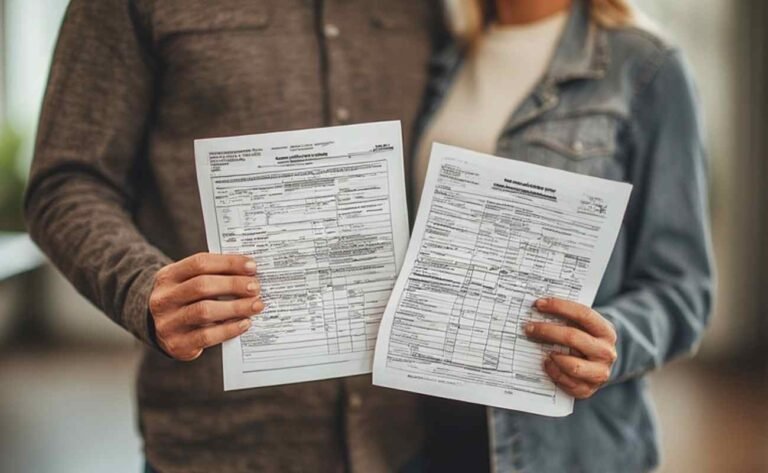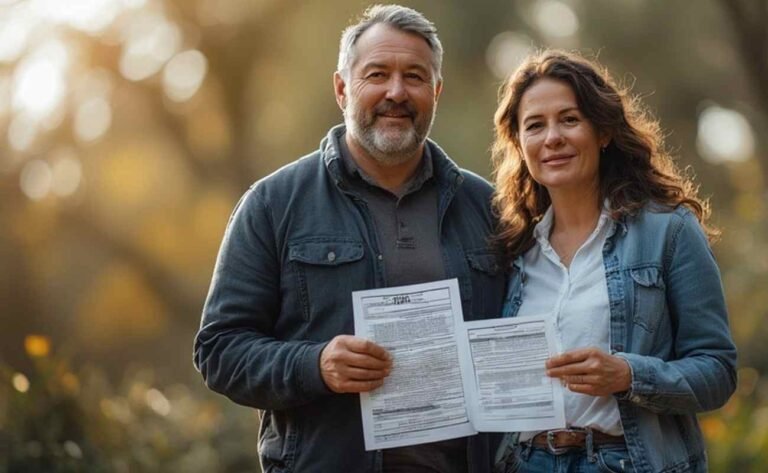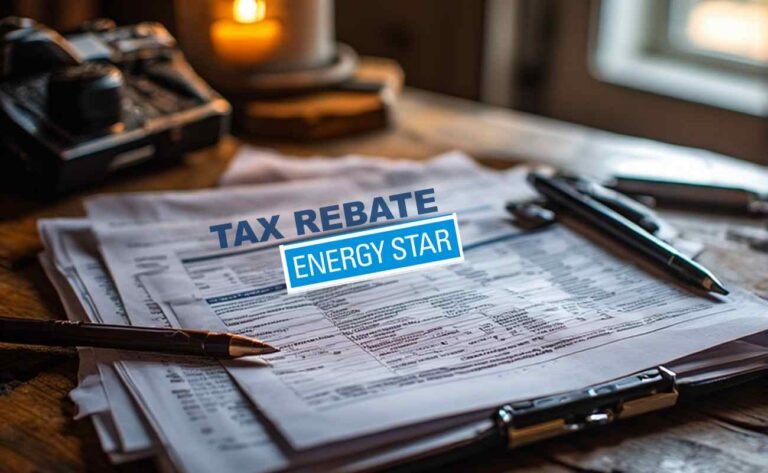States Offering Up to $1,000 & $500 This Year-Tax Rebate for Homeowners and Renters
If you’re a homeowner or renter feeling the pinch from rising property taxes or rent costs in 2025, several states are stepping up with tax rebates to provide some relief. These programs often target seniors, low-income households, or people with disabilities, offering up to $1,000 for homeowners and $500 for renters, though amounts vary by state and eligibility. For instance, Pennsylvania’s expanded Property Tax/Rent Rebate Program now delivers a maximum of $1,000 standard rebate, with supplements pushing it higher, while Colorado’s PTC Rebate can reach $1,154 including heat credits. Minnesota is revamping its renter’s credit to make it easier and more generous, potentially averaging around $964. Keep in mind, these aren’t federal stimulus checks but state-specific initiatives funded by lotteries, budgets, or surpluses—application deadlines loom, so check your state’s rules soon.
That said, not every state offers these, and qualifications like age, income caps around $45,000-$60,000, and residency requirements apply. Programs like New Jersey’s ANCHOR or Maryland’s credits focus on easing housing burdens, but you’ll need proof of payments and income to apply. In this guide, we’ll break down the key states providing these rebates in 2025. Whether you’re claiming as a homeowner or renter, acting now could put money back in your pocket—let’s dive into the details.
Understanding Property Tax Relief for Homeowners and Renters in 2025
Property tax relief programs have evolved this year, with many states adjusting for inflation and housing costs. Homeowners often get credits against their tax bills, while renters receive refunds based on a portion of rent paid, treated as indirect property taxes. However, these aren’t automatic; you must apply, usually by fall deadlines.
For example, I remember chatting with a neighbor last year who almost missed Pennsylvania’s deadline—turns out, she qualified as a widow over 50 and got a nice chunk back. It’s straightforward once you gather your docs, but overlooking income limits can disqualify you. Additionally, some states tie these to energy efficiency upgrades, linking to federal credits like those from the IRS credits for clean energy.
Key Benefits of State Tax Rebate Programs
- Financial Relief: Reduces effective housing costs by refunding part of taxes or rent.
- Targeted Support: Prioritizes vulnerable groups like seniors and disabled individuals.
- Economic Boost: Helps families afford essentials amid high living expenses.
- Varied Funding: Sourced from state budgets, lotteries, or surpluses.
Now, let’s look at eligibility in more detail.
General Eligibility Criteria for Tax Rebates Across States
While specifics differ, common threads run through these programs. Here’s a bullet-point breakdown to help you assess if you qualify:
- Age Requirements: Many programs require you to be 65 or older, though some include younger disabled persons or widows/widowers from age 50.
- Income Limits: Household earnings typically cap at $30,000-$60,000 annually; for instance, Pennsylvania sets it at $46,520, while Colorado goes up to $18,026 for full benefits.
- Residency Rules: You must live in the state for at least six months, often the full year, and the property or rental must be your primary home.
- Ownership or Rental Status: Homeowners need proof of paid property taxes; renters submit rent receipts or landlord certificates.
- Exclusions: Public housing residents or those in tax-exempt properties usually don’t qualify; dependents on others’ taxes may be out too.
- Disability Provisions: If you’re under 65 but disabled (e.g., receiving Social Security disability), you often qualify similarly to seniors.
- Net Worth Caps: Some, like Maryland, limit net worth to $200,000 excluding your home.
Transitioning to specifics, remember to verify with your state’s revenue department—rules can shift slightly year to year.
State-by-State Comparison Table: Tax Rebates for Homeowners and Renters in 2025
To make this easy, here’s a table comparing key states offering rebates up to $1,000 for homeowners and $500 for renters (or close variations). I’ve focused on programs where amounts align with the keyword, using data from 2025 updates. Note: Maximums depend on income; not everyone gets the top amount.
| State | Program Name | Max for Homeowners | Max for Renters | Income Cap (Household) | Key Eligibility Notes | Application Deadline |
|---|---|---|---|---|---|---|
| Pennsylvania | Property Tax/Rent Rebate | $1,000 ($1,500 with supplement) | $1,000 ($1,500 with supplement) | $46,520 | 65+, disabled 18+, widows 50+ | Dec 31, 2025 |
| Colorado | Property Tax/Rent/Heat Credit (PTC) | $1,154 | $1,154 | $18,026 (single), $23,345 (joint) | 65+, disabled, surviving spouses | Oct 15, 2025 for extra TABOR |
| Minnesota | Renter’s Credit (Property Tax Refund) | N/A (homeowners separate) | $2,640 | $73,270 | Low-moderate income renters, simplified AGI use | Integrated with taxes, file by April |
| New Jersey | ANCHOR Program | $1,500 | $700 | Varies by age/income | Homeowners/renters, combined app for seniors | Oct 31, 2025 |
| Maryland | Renters’ Tax Credit | N/A | $1,000 | $60,000 | 60+, disabled, net worth <$200,000 | Oct 1, 2025 |
| Connecticut | Renter’s Rebate | N/A | $900 | Varies | 65+, disabled, full-year resident | Varies by town |
| Montana | Property Tax Rebate (for homeowners), Elderly Renter Credit | $1,150 (elderly) | $1,150 | $45,000 | 62+, 9 months residency | Oct 1, 2025 |
| New York | Real Property Tax Credit | $375 (if 65+) | $375 (if 65+) | $18,000 | Rent <$450/month avg, 6 months residency | With tax return |
| Missouri | Property Tax Credit | $750 | $750 | $27,200 (single) | 65+, disabled | Varies |
| Michigan | Homestead Property Tax Credit | $1,700 | $1,700 | $67,300 | 6 months residency | With tax return |
This table highlights states where rebates hit or approach $1,000/$500. For broader context, 23 states offer some renter relief, per recent reports. If your state isn’t listed, check for homestead exemptions or similar.
Detailed Guide to Pennsylvania’s Tax Rebate Program
Pennsylvania leads with its inclusive program, expanded in 2024 and carrying into 2025. It’s a game-changer for many, especially since it covers both groups equally.
Rebate Amounts Breakdown (List Format)
- Income $0-$8,270: $1,000 standard, plus up to $500 supplement for total $1,500.
- Income $8,271-$15,510: $770 standard, plus $385 supplement for total $1,155.
- Income $15,511-$18,610: $460 standard, plus $230 supplement for total $690.
- Income $18,611-$46,520: $380 standard, plus $190 supplement for total $570 (supplement up to $31,010 income).
Supplements apply if taxes exceed 15% of income, or in certain cities like Philadelphia.
Application Steps for Homeowners and Renters
- Gather docs: Proof of age/disability, income (tax returns), tax bills or rent certificates.
- Choose method: Online via myPATH, mail, or in-person at local centers.
- Submit by Dec 31, 2025—postmark counts.
- Track status online or by phone using SSN and birthdate.
- Expect payment starting July 1, via check or direct deposit.
Pro tip: If you’re a renter, get your landlord to sign the certificate; notarize if needed. Last year, a friend of mine in Pittsburgh got an extra boost from the city supplement—worth checking local add-ons.
Exploring Colorado’s Property Tax Relief Options
Colorado combines its PTC with TABOR refunds, making it robust. Apply early for the full $1,154, which includes heat credits.
Eligibility Checklist
- Age 65+ or disabled/surviving spouse.
- Income under $18,026 single or $23,345 joint.
- Lived in Colorado all year.
- Paid property taxes or rent on primary home.
For more on surpluses, see our guide to Colorado TABOR refunds.
Benefit Calculation Table
| Component | Max Amount | Notes |
|---|---|---|
| Property Tax Credit | $800 | Based on taxes paid |
| Rent Credit | $800 | 20% of rent as “tax equivalent” |
| Heat Credit | $354 | For heating expenses |
| TABOR Add-On | $177 (single) | If applied by Oct 15 |
This setup helps renters too, treating rent as tax. Interestingly, Colorado’s program ties into broader refunds—reminds me of how states use surpluses creatively.
Minnesota’s Updated Renter’s Credit Changes
Minnesota’s big news? They’re simplifying the renter’s credit in 2025, integrating it with income taxes for faster payouts.
Key Changes List
- Simplified Income: Uses AGI instead of broader household income, adding 33,000 eligible renters.
- Expanded Reach: 119,000 more households claim, with half getting $204 extra on average.
- Higher Totals: Average $964 in 2022, up to $2,640 max; total program boosts by $135 million.
- Easier Filing: File with state taxes by April—no separate August deadline.
- Equity Focus: Benefits people of color and Greater Minnesota residents more.
Renters, this is huge if you’re low-income. No direct homeowner equivalent here, but property tax refunds exist separately.
New Jersey’s ANCHOR and Combined Relief Programs
New Jersey’s ANCHOR offers solid relief, with a new combined app for seniors.
Payment Schedule Table
| Program | Start Date | Notes |
|---|---|---|
| ANCHOR | Sep 15, 2025 | Rolling, within 90 days |
| Senior Freeze | Jul 15, 2025 | For 65+ |
| Stay NJ | 2026 quarterly | Budget-dependent |
- Max Amounts: Homeowners up to $1,500, renters $450-$700 based on income.
- Eligibility: Under 65 or seniors/disabled; income varies but often $150,000 cap for ANCHOR.
- Application: Online with ID.me verification; deadline Oct 31.
It’s user-friendly, but verify identity early to avoid delays.
Maryland’s Dual Programs for Homeowners and Renters
Maryland separates homeowner and renter credits, both capping at $1,000.
Homeowners’ Credit Details
- Calculation: Taxes exceeding income percentages (e.g., 9% over $16,000).
- Max Credit: Based on $300,000 assessed value; example: $570 credit on $990 bill for $16,000 income.
- Eligibility: Income <$60,000, net worth <$200,000, primary residence 6+ months.
Renters’ Credit List
- Up to $1,000 direct payment.
- For 60+, disabled, or survivors.
- Lived in MD 6+ months, not in public housing.
- Application by Oct 1.
Both require federal returns for verification.
Other States Offering Similar Housing Tax Credits
Beyond the big ones, here’s a list of additional states with rebates approaching $1,000/$500:
- Connecticut: Renter rebate up to $900 for 65+; apply via local towns.
- Montana: Elderly renter credit $1,150; homeowners get separate rebate filing Aug-Oct 2025.
- New York: Up to $375 if 65+, or $75 under; rent cap $450/month avg.
- Missouri: $750 max for both, income under $29,200 joint.
- Michigan: $1,700 homestead credit; covers rent as tax equivalent.
- Arizona: $60-$120 for seniors.
- California: $60-$120 non-refundable credit.
- Hawaii: $50 per exemption.
- Indiana: $3,000 rent deduction.
- Iowa: Up to $1,000 reimbursement for 65+.
- Maine: Refundable credit based on rent/taxes.
- Massachusetts: $4,000 rent deduction.
- New Mexico: $250 rebate for 65+.
- North Dakota: Up to $400 ratio-based.
- Oklahoma: $1,000 for qualifying seniors/disabled.
- Rhode Island: Credit up to 20% rent, max $300 (from older data, confirm 2025).
For homeowners, many states have homestead credits; Florida’s proposed $1,000 school tax rebate is pending approval.
Federal Ties: Energy-Efficient Home Improvement Credits
Don’t forget federal options that complement state rebates. The Energy Efficient Home Improvement Credit offers up to $3,200 for upgrades like heat pumps through 2025. Renters can access if landlords pass on benefits, per DOE guidelines.
Similarly, the Residential Clean Energy Credit gives 30% back on solar installs. These stack with state programs—worth exploring if you’re upgrading your home. For details, visit the NCSL state tax actions database for policy overviews.
How to Maximize Your Rebate: Tips and Common Mistakes
To wrap up the practical side, here’s a list of tips:
- Gather Early: Collect rent receipts, tax bills, and income proofs now.
- Double-Check Income: Use AGI where required; exclude non-taxable items carefully.
- Apply Online: Faster processing in most states.
- Avoid Scams: Official sites never ask for bank info unsolicited.
- Stack Benefits: Combine with federal credits or local aids.
- Common Pitfall: Missing deadlines—set reminders.
- Seek Help: Free assistance at state revenue offices or AARP centers.
One time, I helped a relative apply for Maryland’s credit; turns out, including IRA value wrongly almost disqualified them—always read fine print.
Combining with Other Relief: IRS and State Links
If you’re a homeowner eyeing bigger savings, check the 2000 tax rebate for homeowners from IRS energy rules. It’s not a direct rebate but credits that feel like one.
In summary, these state programs offer real help in 2025, but action is key. With housing costs up, claiming what’s yours makes sense—start with your state’s site today.







